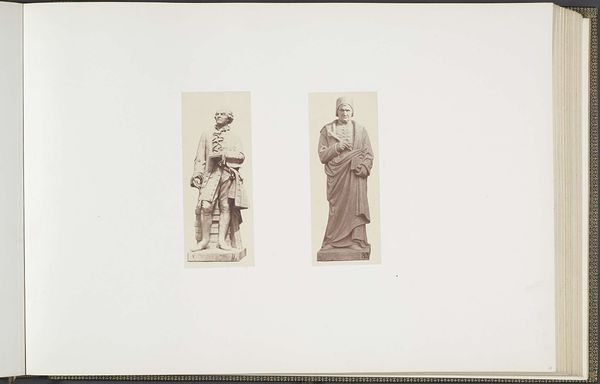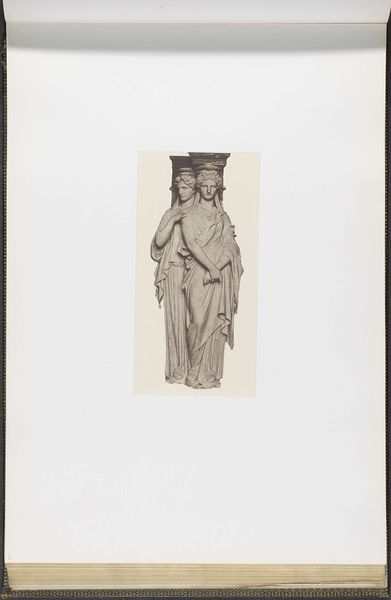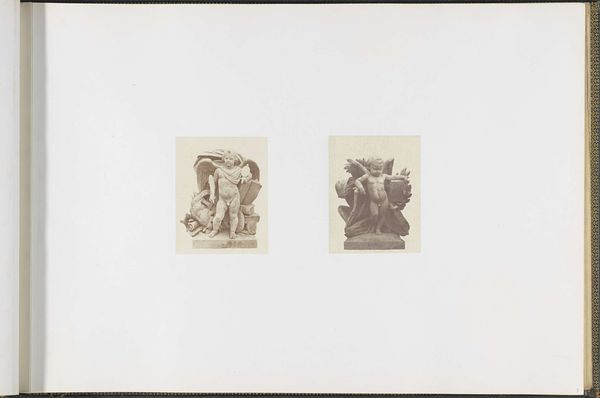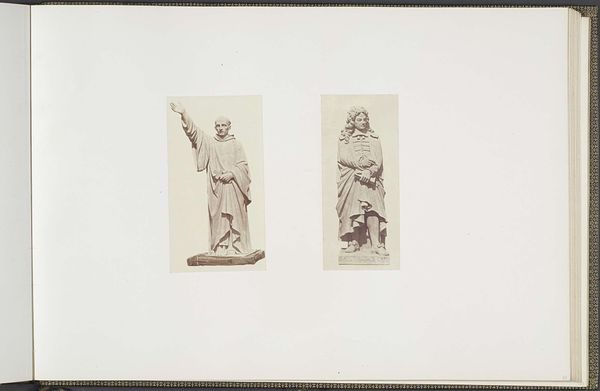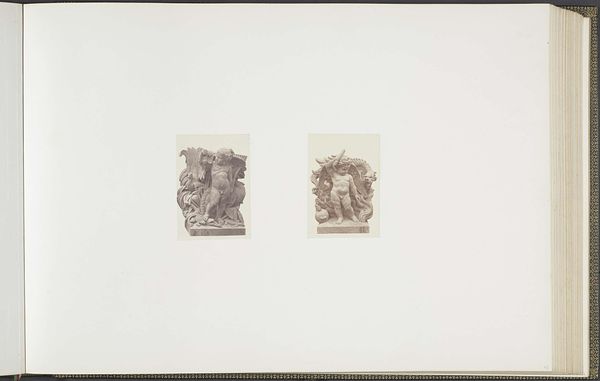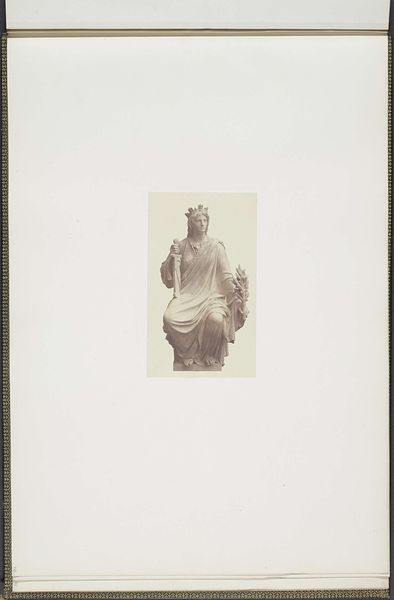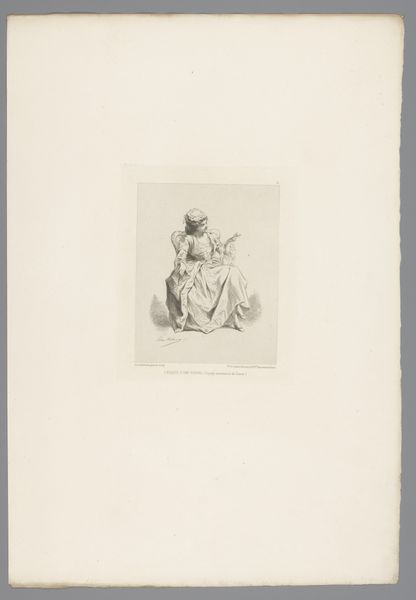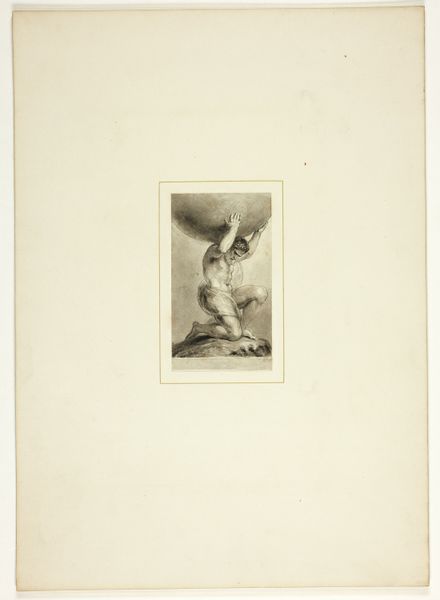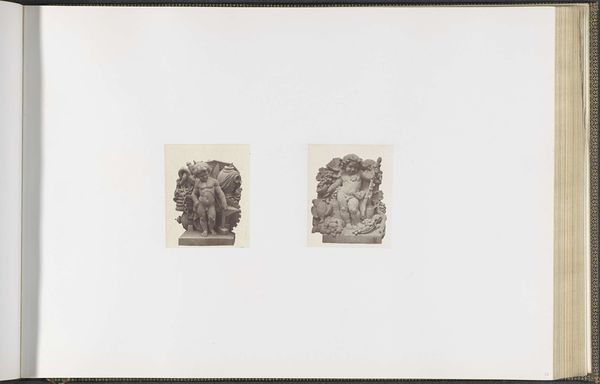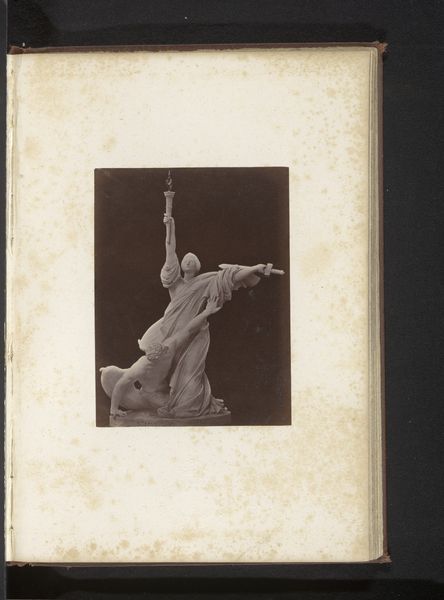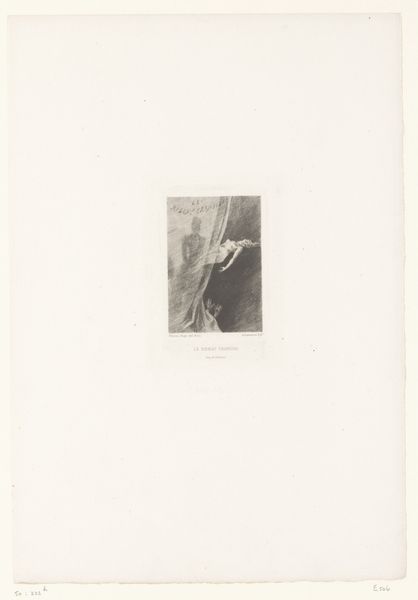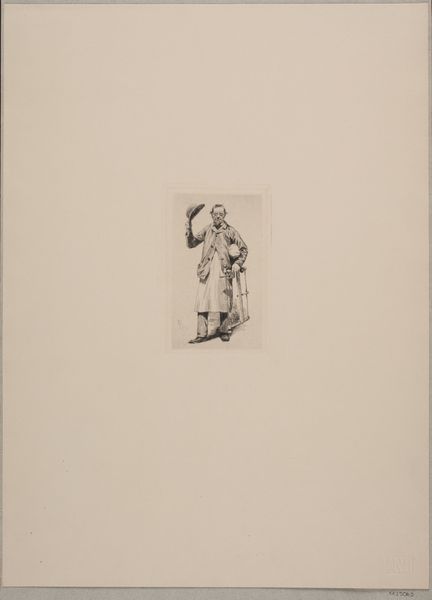
Gipsmodel voor het beeldhouwwerk "La France" door Georges Diébolt op het Palais du Louvre c. 1855 - 1857
0:00
0:00
print, photography, sculpture
#
portrait
#
neoclacissism
# print
#
photography
#
sculpture
Dimensions: height 378 mm, width 556 mm
Copyright: Rijks Museum: Open Domain
Curator: Here we have Edouard Baldus’s photographic print of the plaster model for the sculpture "La France" by Georges Diébolt, taken between 1855 and 1857. This piece resides here at the Rijksmuseum. What are your initial thoughts? Editor: Stark, but kind of lonely. Isolated there on that massive page, she looks…fragile. The lighting suggests a quiet, contemplative mood, yet the sculptural form itself conveys authority, a serene strength. A paradox perhaps? Curator: Precisely. This photograph served a crucial function: the documentation of public art. Sculptures like Diébolt’s "La France", intended for the Louvre Palace, were deeply entwined with the political narrative of the time. The imagery of France was a potent symbol during the Second Empire. Editor: Makes you wonder, though, about this isolated presentation. Was it to elevate the sculpture, to isolate its concept? Placing her alone removes her from the context of power she would otherwise exist within on the Louvre's facade. Curator: Baldus was known for his architectural photography. Placing the focus solely on the sculpture also mirrors a trend toward nationalistic pride; imagery of the time had very specific jobs to do. Photography itself was a rising political and social power. Editor: True. And the Neoclassical style! The Roman robes, the laurel wreath…it's a deliberate harking back to an idealized past. Almost creating a mythic origin story for the nation of France. There's an elegance that you lose a bit once placed atop a palace. Curator: The medium, too, is significant. Plaster models allowed artists to visualize the final work, to get the proportions just so before committing to stone. But through Baldus’ lens, the plaster takes on a different kind of permanence. Editor: A simulacrum of permanence, right? Like a snapshot of an idea in progress. A dream waiting to be realized. This photo and its original intention still carries over into our present day. I think it makes her more potent to stand here today as well. Curator: It's quite captivating how it preserves not just the image but the social aspirations intertwined with its creation. Editor: I think I like her isolated better, here like this. The model almost carries more presence.
Comments
No comments
Be the first to comment and join the conversation on the ultimate creative platform.
